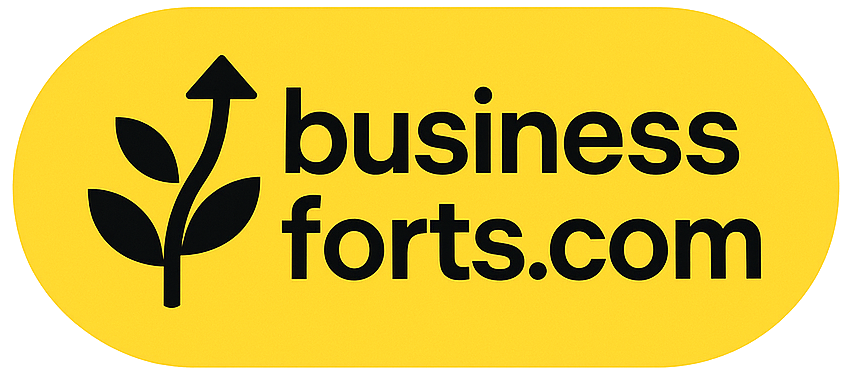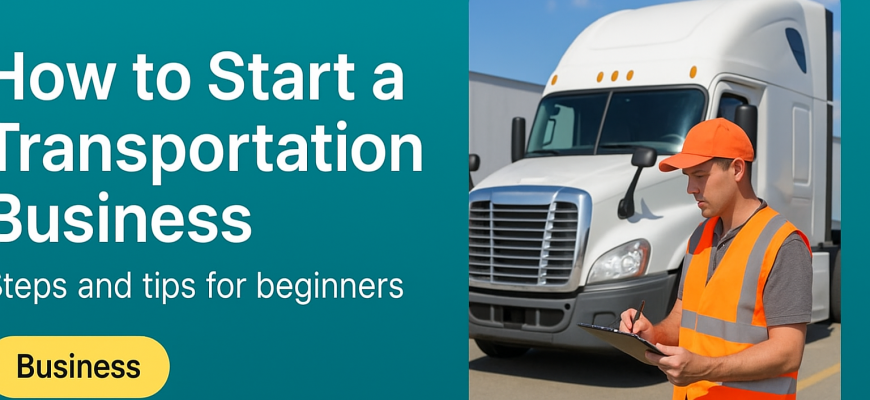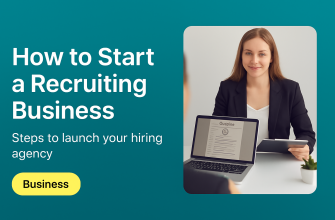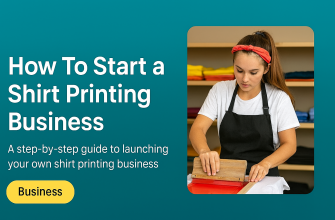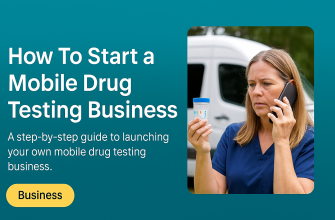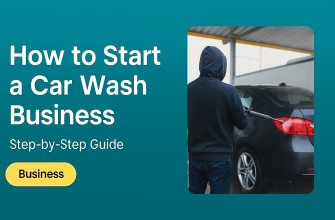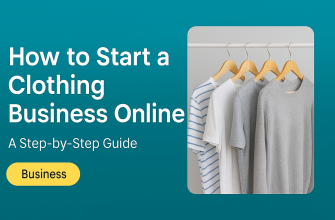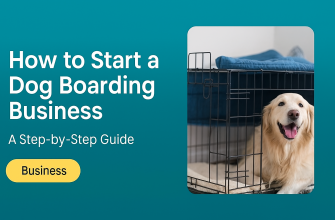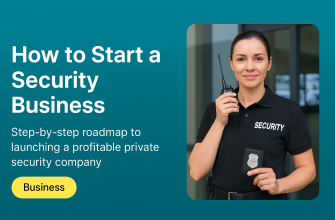Are you a woman with a vision of running your own transportation company? If so, you’re not alone – and you’re exactly who this guide is for. As a business coach who’s helped many women launch successful ventures, I know the transportation industry might seem intimidating at first. It’s true that this field has traditionally been male-dominated (women make up only about 24% of the trucking workforce and just ~7% of truck drivers), but times are changing. Women already own roughly 40% of small businesses in America, and there’s a growing sisterhood of female entrepreneurs stepping into transport and logistics. In fact, transportation is a huge industry full of opportunity – the U.S. trucking sector alone generates around $700 billion annually and employs over 7 million people. So, if you’ve got the drive to start a transportation business, don’t let anything hold you back. Let’s walk through the journey step by step, blending practical how-to’s with a healthy dose of motivation and you-can-do-it confidence.
Women entrepreneurs are increasingly making strides in transportation, an industry long dominated by men. By tapping into supportive networks and resources, you can gain confidence to launch your own transport venture.
- Decide on Your Niche: Passengers or Goods?
- Conduct Market Research and Write a Business Plan
- Formalize Your Business: Registration, Licensing, and Permits
- Get the Right Insurance Coverage
- Secure Funding and Financing for Your Venture
- Build Your Fleet and Team
- Brand and Market Your Business for Growth
- Overcome Challenges as a Woman in a Male-Dominated Industry
- Final Thoughts: You’ve Got This!
Decide on Your Niche: Passengers or Goods?
The first step is defining what kind of transportation business you want to run. Will you transport people or products? There are many paths you could take in this industry, so narrow your focus to a niche that excites you and fits a market need. For example, on the passenger transportation side you might consider starting a taxi or rideshare service, a shuttle van business, a limousine service, a non-emergency medical transport for patients, a tour bus company, or even a school transportation service. On the goods transportation side, you could launch a local courier service, a moving and storage business, a trucking company (hauling freight regionally or cross-country), a last-mile delivery service, or a specialized freight service (like refrigerated transport or livestock hauling). These are just a few examples – the options are almost endless.
Research each niche that interests you and ask yourself: What does my community or target market need most? Perhaps your area lacks a reliable airport shuttle, or maybe local retailers need better same-day delivery options. Consider your own skills and passions too. If you love interacting with people and providing great hospitality, a passenger-focused business might be rewarding. If you have logistics experience or prefer working behind the scenes, a freight or delivery business could be your calling. Choosing a niche is critical, because each type of transport business has different requirements and success factors. Don’t worry about excluding some opportunities by focusing on one niche – you can always expand later. The key is to start with a clear focus so you can become excellent at your service and build a strong reputation in that area.
Before you lock in your decision, size up the competition and demand in that niche. Is the market saturated with providers, or is there room for a new player (you!) with a unique twist? For instance, if there are already five moving companies in town but no women-owned movers, perhaps you can differentiate yourself on personalized service or by marketing as a woman-owned business. If ride-hailing apps dominate your city, maybe there’s still unmet demand for a specialized service like an all-women rideshare for female passengers (a niche some entrepreneurs have explored for safety-conscious riders). Think creatively about how you can fill a gap or improve on what’s out there. This leads right into the next step: doing your homework with solid market research and planning.
Conduct Market Research and Write a Business Plan
Once you’ve chosen a direction, it’s time to get strategic. Market research is your best friend at this stage. Take the time to investigate who your customers will be, what they need, and how you can best serve them. This could involve informal research like talking to potential customers or more formal methods like analyzing industry reports and local demographics. For example, if you’re starting a senior shuttle service, research how many senior living communities or assisted living facilities are in your area and whether they have adequate transport options. If you’re launching a freight business, find out what industries operate nearby – is there a lot of manufacturing or agriculture that might require transportation of goods? Identify your likely competitors and note what they do well and where their customers complain. This kind of intel will help you pinpoint a space where you can shine.
With research in hand, write a thorough business plan. I know “write a business plan” can sound tedious or intimidating, but trust me, this step is critical and incredibly empowering. A good business plan forces you to map out all the pieces of your business model on paper: your mission and vision, target market, competitive analysis, service offerings, marketing plan, operations plan, and financial projections. Think of it as your roadmap. It doesn’t have to be fancy prose – bullet points and charts are fine – but it should be well thought-out. Not only will this plan guide you as you launch, it’s also usually required if you seek outside funding (lenders and investors will want to see it). As you research and write, you’ll naturally answer key questions like what prices you’ll charge, how many customers or contracts you need to break even, and what resources you’ll need to deliver great service.
A few must-haves for your plan include:
-
Business overview: What exactly will you do? (e.g., “Provide on-demand courier services within 50 miles of my city, specializing in same-day delivery for local boutiques.”)
-
Market analysis: Who are your customers and competitors? What is the demand like? (Show that there’s a real need for your service and a gap you can fill.)
-
Services & pricing: How will you structure your services and what will you charge? Will you charge per mile, per hour, per trip, or have subscription contracts?
-
Marketing plan: How will customers find out about you and why will they choose you? (More on marketing later, but outline your main strategies.)
-
Operations plan: What permits, vehicles, software, and people do you need? What will a typical job or route look like?
-
Financial plan: What will it cost to start and run, and what revenue do you project? Include startup costs (vehicles, licenses, initial marketing), ongoing expenses (fuel, maintenance, insurance, wages), and expected income. Show when you’ll likely turn profitable.
Doing this work upfront can save you from nasty surprises down the road. As one piece of wisdom puts it: make sure there’s actually demand for your service before you start – if there’s no demand, the business won’t last long. It’s better to discover challenges now on paper than after sinking a ton of money. And importantly for us as women entrepreneurs, writing your plan can also boost your confidence. You’ll feel a sense of ownership and clarity. I’ve had coaching clients tell me that once they wrote it all out, the idea of running the business felt so much more real and achievable. So pour yourself a cup of coffee (or tea), roll up your sleeves, and start writing that plan! You’ll thank yourself later.
Formalize Your Business: Registration, Licensing, and Permits
Now that you know what you’re going to do and how you’ll do it, it’s time to make it official. This phase is all about handling the legal and regulatory steps to set up a transportation business in the U.S. Don’t let the paperwork daunt you – taken step by step, you’ve got this. We’ll break it down into a few key parts:
1. Choose a Business Name and Legal Structure: Decide on a name that represents your business and is unique in your state. You might come up with something catchy that also hints at your service (e.g., “Heritage Rides Transit” or “Speedy Sister Logistics” – have fun brainstorming!). Check your state’s Secretary of State business name database to ensure your desired name isn’t already taken by someone else. Next, choose a legal business structure. Many small transport businesses opt for an LLC (Limited Liability Company) because it protects your personal assets from business liabilities (important in an industry with potential accidents). An LLC is flexible and fairly simple to set up. You could also consider a Limited Liability Partnership (LLP) if you have a co-founder/partner. Corporations are another route if you plan to grow big, but they involve more complexity. If you’re starting solo and want to test the waters, you could begin as a sole proprietorship, but be aware that offers no liability protection – not ideal for transportation where risks are higher. I generally recommend an LLC for most new transportation businesses, but consult an attorney if you’re unsure. Once decided, register your business with the state (usually through the Secretary of State’s office). This typically means filing simple articles of organization (for LLC) or partnership papers, and paying a registration fee. You’ll officially secure your business name at this point.
2. Get an EIN (Employer Identification Number): This is a federal tax ID number for your business, obtained from the IRS. It’s quick (often instant online) and free to get. Even if you don’t plan to hire employees right away, an EIN is useful for opening business bank accounts, applying for licenses/permits, and filing taxes. Essentially, it identifies your company to the government. Think of it like a social security number for your business. You can apply for an EIN on the IRS website and have it emailed to you the same day in most cases. Easy peasy.
3. Obtain Required Licenses and Permits: Transportation is a regulated industry, so there are likely additional licenses or permits beyond the standard business license. The exact requirements depend on what you’re transporting, where you operate, and how. Here are some common regulatory requirements to look into for U.S. transportation businesses:
-
Commercial Driver’s License (CDL): If you or your drivers will be operating large vehicles (typically vehicles over 26,000 pounds GVW, or any size vehicle carrying 16+ passengers or certain hazardous materials), a CDL is required. For example, running a trucking company with semi-trucks means either you have a CDL or you hire licensed truck drivers. Starting a shuttle bus service may require a CDL with a passenger transport endorsement. Ensure you personally get any necessary license or hire people who have them.
-
US DOT Number and Operating Authority: If you’ll be transporting goods across state lines (interstate commerce) or transporting passengers interstate, you likely need to register with the Federal Motor Carrier Safety Administration (FMCSA) for a USDOT Number and possibly an MC number (operating authority) for for-hire carriage. For instance, an interstate trucking company must have a USDOT Number – it’s a unique identifier used to monitor safety compliance. Intrastate operations (within one state) might also require a DOT number in some states. If you only do local in-state work (like a city taxi service), you might not need a federal DOT registration, but check your state’s rules.
-
State/Local Business License: Most cities or counties require a general business license to operate. This is standard for any business, so get your city/county business license (often an easy application and fee).
-
Special Local Permits (for Passenger Services): If you start a taxi company, for example, many municipalities regulate taxis and require a taxi/vehicle-for-hire permit or medallion. A limousine or shuttle service might need a livery license from your city or state transportation department. If you operate at airports (like an airport shuttle), you may need an airport permit. Always check local transportation authorities for passenger transport requirements.
-
Commercial Vehicle Registration: Register any vehicle used in your business as a commercial vehicle with the state DMV. This often means higher registration fees and adherence to inspection schedules. You might also need a DOT inspection for heavy trucks periodically. Tip: Ensure the vehicle’s title is in the company name (or you have a proper lease) once your business entity is formed.
-
Insurance (Commercial Auto and Liability): You will absolutely need commercial insurance before you hit the road – we’ll cover this in the next section in detail. Just note that proof of insurance is usually required as part of getting your vehicles registered commercially or obtaining certain permits.
-
Industry-Specific Permits: Depending on your niche, there may be additional permits. For example, trucking companies often must comply with the International Fuel Tax Agreement (IFTA) for reporting fuel taxes for interstate travel, and they might need a Heavy Vehicle Use Tax decal if trucks are over 55,000 lbs. Certain oversize/overweight loads need special permits per trip. Hazardous materials transport requires hazmat endorsements and permits. If you plan to transport medical patients, some states require special authorization or certification for Non-Emergency Medical Transportation (NEMT) providers. These are just examples – not every startup will deal with these, but be aware of what’s relevant for you.
-
Department of Transportation (DOT) Compliance: Freight and bus companies must follow safety rules (vehicle maintenance, driver hour logs, etc.). You may need to undergo DOT safety audits within your first year of operating an interstate transport business. This isn’t a permit per se, but you should be prepared to comply with regulations from day one, such as keeping driver qualification files, vehicle maintenance records, etc., if applicable. It’s wise to read up on FMCSA safety rules if you’re going into trucking or commercial busing.
That’s a lot of ground we just covered, I know! The point is, do your homework on regulatory requirements. Missing a required license or permit can lead to fines or even getting shut down, so it’s worth the effort. The Small Business Administration (SBA) provides guides and links to state requirements for transportation businesses (they have a list of issuing agencies for transportation-related businesses). You can also call your state’s Department of Transportation or your city’s business office and simply ask, “What licenses or permissions do I need to start XYZ business?” Consider consulting a lawyer who knows transportation law if you feel overwhelmed or have a complex operation – they can clarify exactly what you need to get in place.
One more piece of encouragement here: Don’t let paperwork discourage you. Every successful transportation business owner had to go through this setup phase. Take it one step at a time. Make a checklist of things to apply for, and knock them out. Each license or permit you obtain is one step closer to making your dream a reality. Soon, you’ll have an official company that’s ready to roll!
Get the Right Insurance Coverage
Let’s talk about insurance, an absolutely crucial aspect of a transportation business. I like to say, “If you can’t insure it, you can’t run it.” Transportation involves moving people or valuable goods – which means risk. Accidents, damages, or injuries can happen even to the best of us, and the last thing you want is one incident wiping out your business or putting your personal finances in jeopardy. Proper insurance is not just a box to check; it’s part of being a responsible business owner and it will protect you, your customers, and your livelihood.
What kind of insurance might you need for a transport business? Here are the main types to consider:
-
Commercial Auto Liability Insurance: This is a must-have for any vehicle you use for business. It covers bodily injury and property damage to others if your vehicle is involved in an accident. Personal auto insurance typically does not cover commercial use, so you’ll need a commercial policy. For example, if you start a delivery van service or a shuttle, get a commercial auto policy on each van. Minimum required coverage amounts vary by state and by the nature of your operation. Interstate trucking firms have to meet federal liability insurance minimums (often $750k or $1 million). Even if not required by law to carry a high limit, I suggest getting robust coverage – $1M liability is a common safe benchmark.
-
Cargo Insurance: If you’re transporting goods, especially valuable cargo, you’ll likely need cargo insurance. This covers the loss or damage to the freight you’re hauling. Many clients (shippers) will require you to have it before they do business with you. For instance, if you haul electronics for a distributor and there’s a theft or accident that ruins the load, cargo insurance would compensate for the loss of the goods.
-
General Liability Insurance: This covers other liabilities not directly tied to a vehicle accident. For example, if a client is injured slipping on your office floor or you somehow cause damage while performing your service (imagine you’re a mover and you accidentally break a customer’s furniture outside of the truck), general liability kicks in. It’s a broad coverage for business-related accidents.
-
Passenger Liability Insurance: If you run a passenger transport service (shuttle, taxi, etc.), ensure your policy covers passenger injuries. There are often specific requirements for livery insurance that covers each seat in a vehicle.
-
Workers’ Compensation Insurance: If you have employees (drivers, dispatchers, loaders, etc.), most states require workers’ comp insurance. This covers medical expenses or lost wages if an employee gets injured on the job (for example, a driver sprains an ankle while unloading a package). Requirements vary by state and number of employees – but even if not required, it can be wise to have if you have a team.
-
Bonding or Specialty Insurance: Depending on your niche, you might consider additional coverage. Freight brokers (arranging loads between shippers and trucks) need a surety bond. If you handle sensitive or high-value items (say, an art transport service), you might get an inland marine policy for broader coverage. These are more specialized, so not every startup needs them.
When shopping for insurance, it pays to speak with an agent or broker who knows the transportation industry. They can advise you on the coverage levels appropriate for your business and help bundle policies for a better rate. Keep in mind, insurance will likely be one of your larger ongoing expenses – but it’s non-negotiable. In many cases, you must show proof of insurance to get your vehicles commercially registered or to obtain certain licenses. And from a business mindset: carrying strong insurance coverage is part of what will allow you to sleep at night. It’s protection against those “what if” scenarios.
One tip: once you have your insurance in place, make sure to integrate safe practices in your operation to keep your premiums manageable. Safe driving training, regular vehicle maintenance (to prevent accidents), and hiring reliable drivers all help reduce claims. Over time, a good safety record can earn you lower insurance rates. This not only saves money but, more importantly, means everyone goes home safe and sound at the end of the day – and that peace of mind is priceless.
Secure Funding and Financing for Your Venture
Starting a transportation business does require capital – vehicles, insurance, licenses, fuel, marketing, the list goes on. Don’t let this scare you; with a good plan (which you have from the business plan step) and knowledge of financing options, you can make it happen. Let’s break down the funding aspect, including special considerations and resources for women entrepreneurs.
Calculate Your Startup Costs: First, determine how much money you actually need to launch. This depends on your business model. A woman starting a single-vehicle courier service might need just enough for a secondhand van, initial insurance, and some marketing – perhaps a few tens of thousands of dollars. On the other hand, if you’re launching a small fleet of trucks, your needs will be higher. Make a list: vehicle purchases or leases, licensing fees, initial insurance down payments, equipment (e.g., hand trucks, GPS units, dispatch software), office or storage space if needed, and a cash cushion for operations (fuel, maintenance, payroll if hiring, etc.) until cash flow builds. It’s not uncommon for trucking startups to need $50k-$100k+ if buying vehicles; but many businesses start smaller or find creative ways to reduce costs (leasing or buying used trucks, starting as an owner-operator with one truck, etc.).
Explore Funding Sources:
-
Personal Savings and Bootstrapping: Many entrepreneurs start by investing their own savings to retain full ownership and avoid debt. If you’ve saved up for this dream, that’s wonderful. You can also bootstrap by starting small and reinvesting your early profits to grow gradually.
-
Bank Loans and SBA Loans: Traditional financing like bank loans or an SBA-backed loan can provide larger amounts of capital. An SBA 7(a) loan, for example, is often used for small businesses and can offer favorable terms. Be prepared: lenders will want to see a solid business plan and financial projections (you’ve got those!) and often some collateral (like the vehicles you’ll purchase). Tip: Establishing a business bank account and even a business credit card early on can help build your business credit profile. This, along with your EIN, separates your business finances from personal – a must for professionalism and accounting.
-
Microloans: If your funding needs are modest, look into microloan programs. The SBA Microloan program, for instance, lends up to $50,000 and often works with nonprofit lenders who might be more flexible and offer training. Microloans are frequently used by women and minority entrepreneurs and can be a great way to get a few thousand dollars to, say, buy that first van or cover initial expenses.
-
Grants for Women Entrepreneurs: Here’s some good news – there are grants out there specifically to help women start businesses. Unlike loans, grants are essentially free money (you don’t repay them), though they are competitive. For example, the Amber Grant is a well-known program that awards $10,000 each month to a woman-owned business and even larger annual grants to monthly winners. It has a simple application (basically you explain your business and pay a small fee). Another example is IFundWomen, a platform that not only offers crowdfunding but also curates grants from corporate partners for women entrepreneurs. There are also micro-grants like the HerRise Microgrant ($1,000 monthly to women of color entrepreneurs). While you shouldn’t bank your whole funding plan on winning a grant, it’s wise to apply to a few that fit – you never know, and even $5K or $10K can go a long way for startup costs.
-
Contests and Corporate Grants: Companies like FedEx run small business grant contests (FedEx’s contest offers up to $50,000 to winners). These are open to all, not just women, but a compelling story as a woman-owned startup can be an advantage in such contests (the judges often love supporting underrepresented entrepreneurs). Keep an eye out for pitch competitions or local business plan contests as well.
-
Investors/Partnerships: Depending on your ambition, you might seek an investor or partner to inject capital. For a small local transport business, venture capital is likely not the route (VCs tend to chase high-tech or scalable startups), but perhaps a local angel investor or even a business partner who provides funding in exchange for equity could be an option. Just be cautious: taking on an investor means giving up some ownership or control, so weigh that carefully.
-
Women-Focused Loan Programs: Some organizations and lenders have initiatives specifically for women. For example, community development financial institutions (CDFIs) in your area might have special loan programs for women entrepreneurs. The SBA’s Office of Women’s Business Ownership coordinates a network of Women’s Business Centers (WBCs) across the country – these centers can help you find local financing resources and sometimes microloans.
-
Crowdfunding: Platforms like Kickstarter or Indiegogo could help if you have a concept that you can pitch to the public (works best if there’s a community angle or something tangible you offer as rewards). There’s also equity crowdfunding if you’re open to selling small stakes to many investors.
A reality we have to acknowledge is that women have historically faced extra hurdles in accessing capital – for instance, women-owned businesses receive less than 5% of small business loan dollars. This statistic can be frustrating, but don’t let it deter you; let it fuel you. It means we sometimes have to be more resourceful and persistent in financing. The landscape is improving with more grants and funds targeting women, but you may still encounter skeptics. My advice: be prepared. When you approach lenders or investors, arm yourself with a rock-solid business plan, market research data, and confidence in your vision. If one bank says no, try another, or look at alternative funding paths. There are plenty of success stories of women who pieced together funding from multiple sources and went on to thrive.
Also, consider starting lean: lease vehicles instead of buying new, or buy good used vehicles to save money upfront. Start with one or two contracts or clients and prove the concept before expanding. This reduces the amount of capital you need at the very start. It’s completely fine to grow step-by-step.
Lastly, don’t be afraid to ask for support. Sometimes family and friends can help with a loan or investment to get started (just treat it formally to avoid hard feelings later). And tap into your networks – perhaps there’s a women entrepreneur group in your city where members share leads on funding opportunities. Remember, financing is often like patchwork; you might use a bit of savings, a bit of loan, a bit of grants, etc., to assemble the total funds needed. Stay persistent and creative.
Build Your Fleet and Team
Now we get to one of the more exciting parts: actually getting your vehicles and building your team (if you’ll have one). This is where your dream starts to take physical form – the van, truck, or car with your logo on it, ready to hit the road! It’s also where a lot of your funding will go. Let’s talk about how to do this smartly.
Procuring Vehicles and Equipment: The vehicles are the heart of any transportation business. Choosing the right ones comes down to your niche, budget, and growth plan. Ask yourself some key questions when selecting equipment:
-
What capacity do I need? If you’re focusing on passengers, how many seats should your vehicle have – a sedan for individual rides, or a 15-passenger van for group shuttles? If hauling goods, how big and heavy are typical loads – will a cargo van suffice, or do you need a 26-foot box truck or a full tractor-trailer? Right-sizing your vehicles is important. Too small and you turn away business; too large and you pay for capacity you don’t use.
-
What terrain and distances will I cover? For strictly urban deliveries, maybe a small van (better on gas and easier to maneuver in city streets) is ideal. For long highway hauls, a semi-truck with sleeper cab might be necessary. If you’ll deal with rough rural roads, you might need sturdy 4×4 pickups or trucks.
-
Special features needed? Do you need refrigeration (for perishable goods transport) or a liftgate (for heavy freight with no loading dock)? Maybe a wheelchair lift if you’re doing medical transport for wheelchair users. List any special requirements and ensure the vehicle meets them.
-
Buy or lease? New or used? This is a major decision. Buying new vehicles gives you reliability and warranty coverage, but costs a premium. Used vehicles can save money upfront but might require more repairs – have a trusted mechanic inspect any used vehicle before purchase. Leasing can be a good option to get newer vehicles with lower monthly payments than a purchase loan, and maintenance might be included; plus you don’t tie up as much capital. Many trucking companies start with leasing or financing trucks instead of outright purchase. Consider starting with one vehicle to prove your business model, then expanding your fleet as revenue grows. You can always scale up as demand increases.
-
Fleet image and efficiency: Since branding matters (more on that soon), having a clean, reliable-looking vehicle is valuable. Customers will see your vehicles, and you want them to inspire confidence. Also think about fuel efficiency – fuel will be a major ongoing cost, so a model that saves on gas or diesel can improve your bottom line over time. There are even grants in some states for clean-fuel vehicles or electric vans/trucks; worth looking into if relevant.
Take your time in this decision. You might spend days or weeks researching the best deals on vehicles, and that’s okay – it’s a big investment. Negotiate with dealerships or consider auctions for used commercial vehicles if you’re savvy. If you’re not vehicle-tech savvy, bring along someone who is, to avoid getting sold a lemon. The goal is to build a fleet that is cost-effective, reliable, and fit for the job from day one.
Loading cargo into a delivery van requires planning and the right equipment. Choosing suitable vehicles – whether vans, trucks, or shuttles – is essential to meet the specific needs of your transport niche and present a professional image to clients.
Setting Up Maintenance: Once you have vehicles, set up a maintenance routine immediately. Downtime is the enemy in this business – a broken-down vehicle can mean lost revenue and unhappy customers. Whether you handle maintenance yourself, have an in-house mechanic (probably only if you have a larger fleet), or work with a local auto shop, ensure regular services (oil changes, brake checks, etc.) are performed. Keep records of all maintenance; not only is it good practice, but if you’re subject to DOT regulations, you’ll need those records. Consider daily vehicle inspection checklists for you or drivers to catch any issues early (tire pressure, lights, etc.). A well-maintained fleet is safer and more profitable in the long run.
Hiring Your Team (Drivers and Staff): In the beginning, you might be a one-woman show – owner, dispatcher, and driver all in one. That’s totally fine. Many of the most successful women in transportation started exactly that way. As you grow, though, you may find you need extra hands on deck. Knowing when to hire is important. Signs that it’s time to hire might include consistently turning down business because you can’t be two places at once, or spending so much time driving that you can’t properly handle sales and admin tasks. If you find yourself at that point, it’s probably time to bring someone on.
When hiring drivers or other employees, set high standards and don’t rush the process. These people will represent your company and, in the case of drivers, literally hold your business’s safety in their hands on the road. Key tips for hiring:
-
Check qualifications and background: For drivers, ensure they have a valid appropriate license (CDL if required) and a clean driving record. Verify any endorsements (passenger, air brakes, etc.) if needed. You can request a Motor Vehicle Record (MVR) report. Also, do a background check for any history that could be problematic.
-
Prioritize reliability and customer service: Skills can be taught, but traits like integrity and dependability are gold. In my experience, a slightly less experienced driver who is eager, honest, and shows great customer service attitude can be a better hire than a grizzled veteran driver with a bad attitude. Look for people who align with your company values (safety, courtesy, etc.). Since you may be a small team, you want team players.
-
Conduct interviews and tests: Don’t be afraid to have a practical element in hiring drivers. You could do a road test to see how they handle the vehicle. Ask scenario questions: “What would you do if X happened on the road or a customer did Y?” This gauges their problem-solving and people skills.
-
Verify documents: For any hire, ensure you complete all legal hiring steps: get their I-9 employment eligibility, W-4, any drug testing if required (trucking companies under DOT must have a drug testing program, for instance). Also, set them up on payroll properly (don’t under-the-table pay; it’s not worth the risk).
-
Train them your way: Even experienced hires need to learn your protocols. Train new drivers on your routes, your safety expectations, how to use any dispatch or tracking technology you have, how to interact with customers, etc. Provide an employee handbook or standard operating procedures if you can – it sets a professional tone.
-
Culture counts: Create an environment where employees respect you and enjoy working with you. As a woman leader in a tough industry, you can set a refreshing tone of mutual respect and teamwork. Make it clear harassment or discrimination won’t be tolerated in your outfit. Foster open communication – employees who feel heard and valued will stick around and do their best work.
Remember, you don’t have to hire all at once. Some transportation businesses use subcontractors or independent owner-operators to grow without taking on a lot of employees at first. For example, a freight brokerage might contract other trucking companies to haul loads, or a delivery service might use independent courier drivers. There are pros and cons to that approach (less control over contractors, and legal distinctions to manage), but it’s an option. Whether employees or contractors, always treat people with respect and professionalism, and expect the same in return.
Finally, as you expand, consider if you need support staff beyond drivers. Maybe a part-time bookkeeper to manage the finances, or a dispatcher to coordinate schedules once you have multiple vehicles on the go. These roles can greatly streamline your operations – you don’t have to do it all alone forever. Delegating is a sign that your business is growing, which is a good thing.
Brand and Market Your Business for Growth
“Build it and they will come” – unfortunately, this doesn’t automatically apply in business. Even if you have the best service in town, people need to know about it! That’s where branding and marketing come into play. The good news is that marketing a transportation business can be straightforward, and even a one-woman business can make a big splash with the right strategies. Let’s break it down:
Craft Your Brand Identity: Your brand is more than just a logo or a name – it’s the impression you leave on customers. Think about the message you want to convey. Reliable? Safe? Friendly? Professional? Perhaps all of the above. As a woman in this field, you can also decide if you want to highlight that fact as part of your brand. Some women-owned businesses leverage that uniqueness – for instance, using a tagline like “Woman-Owned and Operated” can be a selling point, as some clients like supporting diverse businesses. (Also, consider getting certified as a Women-Owned Small Business or Disadvantaged Business Enterprise if you plan to bid on corporate or government contracts – it can be a marketing advantage in B2B scenarios.) Choose a business name, logo, and color scheme that align with your image. If design isn’t your forte, hire a graphic designer or use affordable online services to create a professional logo. Slap that logo on your vehicles, uniforms (if any), business cards, and website. The goal is to look polished and trustworthy – even if you’re small, you can present a sharp image that rivals the big companies.
Online Presence – Your Digital Storefront: In today’s world, when someone hears about a business, the first thing they do is search online. You’ll want to be easily found and make a great first impression digitally. Here’s how:
-
Website: Create a clean, easy-to-navigate website that clearly states your services, service area, and contact information. It doesn’t have to be super fancy, but it should be mobile-friendly and professional. Include an “About” page (share your story and the fact that you’re a woman-owned business – many customers will find that refreshing), a “Services” or “Rates” page, and maybe some testimonials as you get them. Add photos of your vehicles or you/your team at work if possible – people like to see the faces and trucks they’ll be dealing with.
-
Search Engine Optimization (SEO): Use common search terms on your site so that it appears when locals search for what you offer. For example, if you run a courier service in Dallas, make sure your site mentions “Dallas courier” or “same-day delivery Dallas” frequently and naturally. Claim your Google My Business listing – this is crucial for local services. It’s free and will make your business show up in Google Maps and local search results. Fill it out with your info and encourage customers to leave reviews there.
-
Social Media: Depending on your clientele, choose platforms to engage. Facebook is great for local service businesses – you can create a business page, share updates or photos (like your new van or a successful big job you did), and even run targeted Facebook ads relatively cheaply. LinkedIn can be useful if you’re targeting business clients (e.g., freight contracts or corporate transportation deals). Instagram or TikTok might not be as critical unless you have a visually interesting niche or want to share your journey and build a community (some trucking company owners have surprisingly popular social media showing life on the road!). The key is to be present where your customers are looking. At minimum, a Facebook Business page is recommended, as well as being on LinkedIn as a professional.
-
Online directories: List your business on any relevant online directories or platforms. For passenger transport, that might be Yelp or TripAdvisor (especially for tours or shuttles). For freight, get listed in industry directories or load boards. Also, ensure you’re on any local small business directories or chamber of commerce listings.
Leverage Word-of-Mouth and Referrals: In many communities, especially for services like local transport, word-of-mouth is gold. Do an outstanding job for your first customers and then ask for reviews or referrals. Satisfied customers are often happy to spread the word – sometimes they just need a nudge. Something as simple as leaving behind a flyer or business card that says “Thank you for your business! Refer a friend and get 10% off your next service” can work wonders. If you’re transporting passengers, maybe a referral discount or a free ride voucher for referring someone. If you’re B2B (say a freight hauler for local warehouses), ask your contacts if they know anyone else who could use your reliable service. Don’t be shy; people generally like helping small businesses, especially those run by passionate entrepreneurs. Also, positive online reviews on Google, Yelp, or Facebook will boost your credibility. Encourage happy clients to leave a quick review – it’s like modern word-of-mouth that future customers trust.
Networking and Partnerships: Build relationships that can lead to business. Join local business groups (many cities have a women’s entrepreneurial network or a transportation industry group). If you run a shuttle or taxi service, connect with hotel concierges, event planners, wedding venues, etc., who can refer guests to you. If you’re in trucking or delivery, attend local trade events or meetups where potential clients gather (for example, if you do food distribution, go to food industry events). Sometimes, strategic partnerships can be formed – maybe a local florist needs a delivery partner and you can become their go-to courier, or a larger trucking company can outsource smaller local jobs to you. Let businesses know you exist and what you offer.
Marketing Channels: Here are a few specific marketing ideas that can work for transportation businesses:
-
Local Advertising: Old-school but still works – print some flyers or door hangers if your service is local (e.g., advertise your new ride service at senior centers or community bulletin boards). Local newspapers or radio might be effective for certain demographics. Vehicle wraps or decals are a moving billboard – your van or car with your branding and phone number will advertise for you everywhere it goes.
-
Online Ads: Google Ads targeted to your city (“airport shuttle in Phoenix”) or Facebook ads aimed at your local demographic can generate leads. The nice thing is you can start with a small budget and test results.
-
Content Marketing: Establish yourself as an expert. Maybe start a simple blog on your website about transportation tips (this also helps your SEO). For example, a moving service could publish “5 Tips to Prepare for Moving Day” – useful content that might attract readers who become customers. Or a trucking business could highlight “Day in the Life of a Female Trucking Entrepreneur” to both market and empower (this could even get media attention – a local news outlet might feature your story, which is free publicity).
-
Email Marketing: If appropriate, build an email list of customers or interested prospects. A quarterly newsletter with updates or special offers can keep your service in mind for when they need it. This is more applicable if you have repeat customers or a subscription model.
The overarching principle is to be visible and be consistent. Marketing doesn’t have to cost a fortune – many tactics like social media, networking, and leveraging your happy customers are more about time and creativity than big dollars. Track what works by asking new customers how they heard of you. Over time, focus on the channels that yield results.
Finally, deliver excellence. The best marketing is a happy customer singing your praises. So make sure once you get a client, you exceed expectations. Be on time, communicate clearly, handle their goods or person with care, and add that personal touch (which is something we women often excel at – use that emotional intelligence to connect and make people feel valued). A delighted customer will not only come back but bring others with them.
Overcome Challenges as a Woman in a Male-Dominated Industry
By now, you’ve gathered that starting a transportation business involves a lot of practical steps. But beyond the business checklist, there’s another aspect we need to talk about candidly: navigating this industry as a woman entrepreneur. The reality is you may face some unique challenges – however, none of them are insurmountable. In fact, many women have turned these “challenges” into opportunities to stand out. Let’s address a few common issues and how to overcome them:
Breaking the Stereotype: Transportation (trucking in particular) has long been seen as a “man’s world.” You might occasionally encounter people – whether they’re vendors, potential customers, or even employees – who are surprised (pleasantly or otherwise) to find out a woman is running the show. Some might underestimate you at first. My advice: do not internalize those doubts. Instead, command respect through your competence and confidence. One successful female CEO in trucking recalled early in her career that often “I was definitely the only one wearing lipstick and carrying a purse” in the room, “but I knew my business and walked in with confidence.” She let her knowledge and results speak louder than any skepticism. Know your stuff (regs, metrics, industry lingo) and don’t be afraid to assert yourself. When someone realizes you’re not only friendly but also formidably knowledgeable, any biases tend to dissolve quickly.
Building Credibility: Sometimes as women we feel we have to “prove ourselves” more, especially in technical fields. While this double standard isn’t fair, you can absolutely prove any naysayers wrong. Get any certifications or training that add to your credibility (for example, get that CDL license yourself – nothing commands respect like the boss being able to drive the 18-wheeler too!). Use data and facts in negotiations or sales pitches: show prospects how reliable your service is with numbers (on-time delivery rates, safety record, etc.). Each contract you win and each job well done builds your reputation. Over time, your work will speak for itself. Also, highlight your strengths as a woman leader. Studies often show women excel in communication and organization – traits crucial for logistics. Your attention to detail and empathetic customer service can become selling points. Some clients might actively choose you because you offer a different, perhaps more thoughtful approach than they’re used to.
Facing Doubters or Discrimination: It would be wonderful if everyone in business was open-minded, but you might run into the occasional old-school thinker or even chauvinist. If a vendor or mechanic talks down to you, or a client directs all questions to your male driver instead of you – have a plan for how to respond. Maintain professionalism and don’t be afraid to politely correct them. For instance, if a truck dealership salesman asks “Can I speak to the owner or your husband about the purchase?”, you can smile and say, “I am the owner, and I’ll be making the purchasing decision.” Moments like that can actually be empowering. When you encounter bias, remember it’s their issue, not yours. Find your support network (more on that in a moment) to vent if needed, then keep moving forward. Always know that you deserve a seat at the table – or in the driver’s seat – just as much as anyone.
Work-Life Balance and Lifestyle: Transportation jobs can be demanding. Long hours driving or managing operations can take a toll, especially if you have family responsibilities. As a woman, you might feel pulled in multiple directions (business, kids, household, etc.). First, give yourself grace – you don’t have to do everything perfectly. Set boundaries to avoid burnout. Maybe that means designating one day a week where you don’t take evening calls so you can have dinner with family, or hiring part-time help at home during crunch periods. Use technology and delegation to your advantage – for example, a good routing software could save you hours, or a virtual assistant could handle administrative tasks remotely. Many women find creative ways to balance; one trucking business owner even integrated her family into the business (her kids helped with small tasks as teens, turning it into a family enterprise). Find what balance means for you. Remember, your well-being is essential to the business’s success.
Finding Community and Mentorship: Perhaps one of the most important strategies is not going it alone. Seek out other women in the industry – there’s so much strength in sharing experiences and advice. The Women In Trucking Association (WIT), for example, is a fantastic resource if you’re in trucking or logistics. They have mentoring, networking events, and even image teams that celebrate female drivers and owners. There are also groups for women in transportation more broadly, and plenty of general women entrepreneur communities. Connecting with peers can provide moral support, knowledge (you might get tips on the best insurance brokers or how to handle a certain permit office, etc.), and sometimes even business opportunities. Don’t hesitate to reach out – many women are excited to help others coming up. I’ve seen women link up through a network and end up referring business to each other or teaming up on larger contracts. Mentorship, whether formal or informal, is incredibly valuable. Even a monthly coffee with a fellow woman business owner (in any industry) can keep you motivated and on track.
Tapping into “Female Advantage”: There are aspects of being a woman in business that you can leverage as advantages. For one, you stand out in a good way – use that uniqueness in your branding and pitches. You might get media attention more easily; local news love human-interest stories like “Mom of 3 starts her own trucking company, breaking barriers.” Don’t shy away from publicity – it’s free marketing! Additionally, there are initiatives encouraging diversity: some corporate clients or government agencies have supplier diversity goals to spend with women-owned companies. Getting certified as a Woman-Owned Business can open doors to contracts that might not be as accessible to others. Essentially, what was once seen as a disadvantage can be transformed into a strong selling point in the right context.
Lastly, let’s talk mindset. The road you’re taking is courageous and not always simple, but remember why you’re doing this – to build something of your own, to serve customers in a way only you can, to create freedom or wealth or a legacy for yourself and your family. Keep that vision in your mind on the tough days. Celebrate your wins, no matter how small. Maybe it’s your first dollar of revenue (frame that first dollar!), or your first contract, or simply positive feedback from a customer who felt you went above and beyond. These are affirmations that you absolutely belong in this industry.
As one woman trucking entrepreneur put it: “There’s a lot of opportunity for women in trucking… if you work hard and pay attention, there’s no limit.” The same is true across all transportation sectors. Yes, there will be obstacles, but none that you can’t overcome with determination, skill, and support. You are not alone – there’s a whole wave of women entering and reshaping the industry alongside you. When you face a challenge, think of it as paving the way a little smoother for the next generation of women who will follow in your tire tracks.
Final Thoughts: You’ve Got This!
Starting a transportation business as a woman is a bold and exciting move. We’ve covered a lot: choosing your niche, handling legalities, securing funds, getting your wheels (literally) on the road, finding customers, and holding your own in the industry. It might feel overwhelming, but remember – take it one step at a time. Every big journey is just a series of small steps strung together. You’ve already taken the first step by reading and educating yourself, and that shows your commitment.
As you venture forward, keep a few things in mind:
-
Plan well, but be ready to adapt. The transport business can throw curveballs (road closures, client changes, economic shifts). Your thorough planning will guide you, but stay flexible and creative when challenges arise.
-
Lean on your support system. Whether it’s a mentor, a fellow businesswoman, a supportive spouse, or this coach (hey, I’m rooting for you!), don’t hesitate to seek advice or simply encouragement. Entrepreneurship can be a rollercoaster – you deserve a cheering squad.
-
Stay true to your vision and values. They will be your compass. If one of your core values is, say, sustainability, find ways to incorporate that (maybe eventually using electric vehicles or optimizing routes to save fuel). If giving back is part of your mission, perhaps you’ll mentor other women once you’re established. These things give your business soul and purpose beyond just profit.
-
Celebrate the wins. Seriously, make it a point to acknowledge progress. Got your LLC approved? Did your first commercial run? Landed a second client? Treat yourself or share the news with friends who will high-five you. Those positive moments fuel you up for the next leg of the journey.
In the U.S., the roads and highways are vast – and there is plenty of room for you and your new company to drive forward and succeed. The transportation industry needs your perspective, your talent, and your leadership. As a woman, you bring something special to the table, and customers and partners will recognize that. There will be days when you’re tired or things go wrong (flat tires and flat sales months happen), but keep that determination that led you here. Remember why you started, and push on.
I believe in you and I’m excited for you. Years from now, you might look back and marvel at how far you’ve come – from idea to thriving business. So get started, stay inspired, and show the world that a woman can steer any enterprise to great success, even in the transportation lane.
Your journey is just beginning – and I for one can’t wait to see you crush it in this industry. Now, let’s roll!
